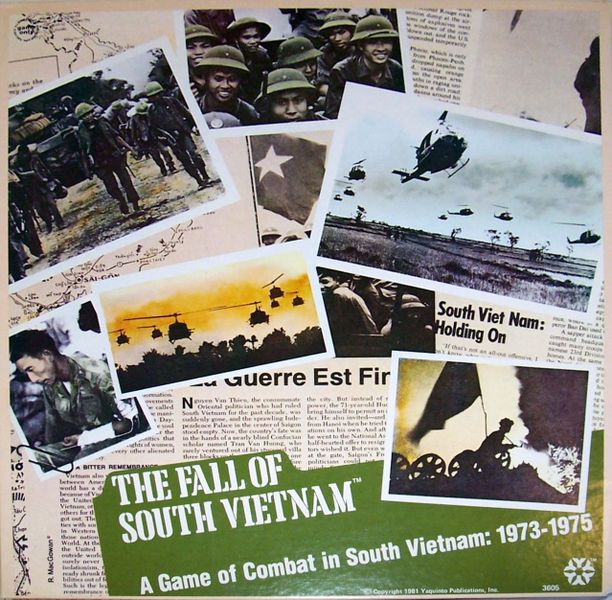The Fall of South Vietnam: A Game of Combat in South Vietnam – 1973-1975 (1981) Board Game
The Fall of South Vietnam: A Game of Combat in South Vietnam – 1973-1975 is a wargame released in 1981, designed by Rodger B. MacGowan. The game focuses on the final years of the Vietnam War, simulating the conflict between North and South Vietnam, as well as the involvement of the United States.
Game Components of The Fall of South Vietnam: A Game of Combat in South Vietnam – 1973-1975
How To Setup The Fall of South Vietnam: A Game of Combat in South Vietnam – 1973-1975
To set up the game, the South Vietnamese player places all their units within the provinces of South Vietnam, adhering to stacking limits (5 units per province, with up to 2 additional units in the provincial capital, and 4 units in Saigon). North Vietnamese units start off the board, assumed to be in Cambodia.
Gameplay Mechanics and Game Objective
Player Experience
The game is designed for a quick and straightforward experience, lasting about 2-3 hours. It is praised for its immediate results and direct action, making it appealing for those seeking a lighter wargaming experience. However, it lacks the complexity and historical accuracy that some players might desire.
Pros
Cons
Personal Thoughts on The Fall of South Vietnam: A Game of Combat in South Vietnam – 1973-1975
This game is ideal for players who want a fun, light wargaming experience without delving into overly complex rules. It is not suited for those seeking high historical accuracy or detailed operational simulations. Instead, it offers a balanced and engaging game that can be enjoyed by newcomers to the wargaming community.
We are supported by our audience. When you purchase through links on our site, we may earn an affiliate commission, at no extra cost for you. Learn more.

